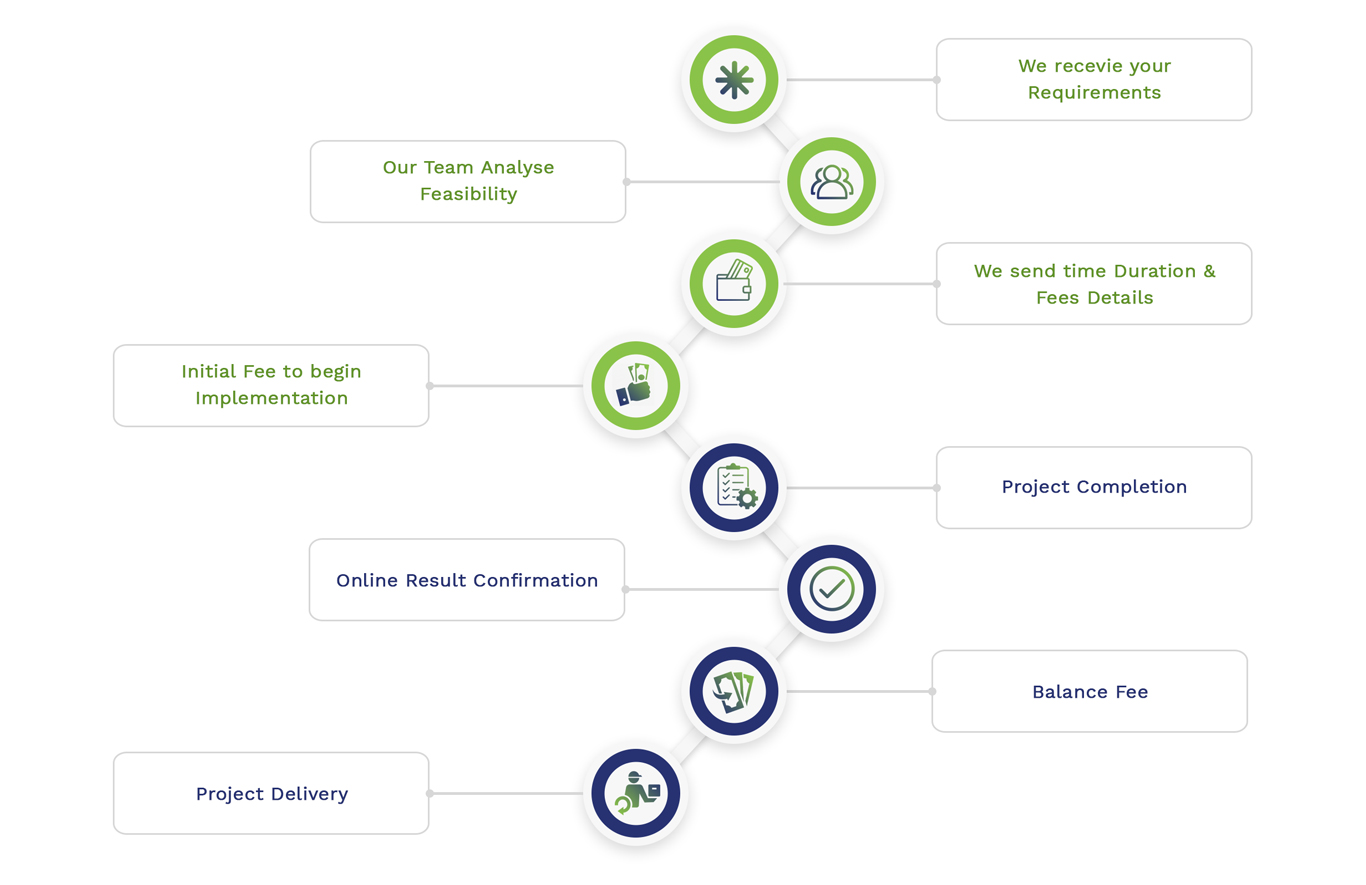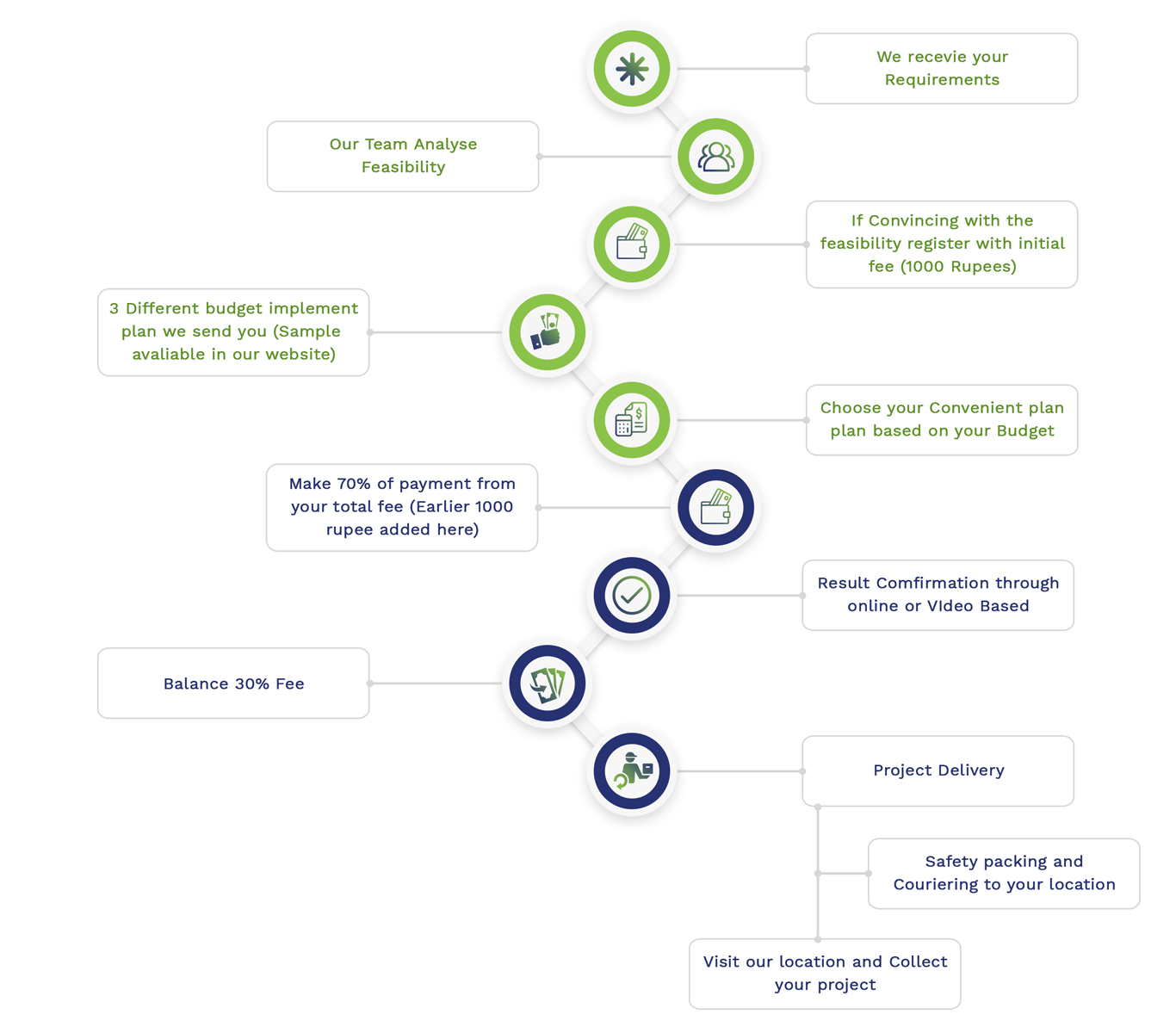MATLAB Electronics Simulation is a rapidly emerging area with innovative plans, techniques and strategies we lay novel thesis topics and thesis writing services for scholars. For designing, simulating and investigating several electronic systems and circuits, we provide effective and remarkable research topics with the application of MATLAB and Simulink:
- Simulation of a Buck Converter for Voltage Regulation
Main Goal: In order to convert an extensive input voltage to a flexible and minimum output voltage, a buck converter needs to be designed and simulated.
- Significant Elements: MOSFETs, diodes, inductors and capacitors.
- Required Skills: MATLAB Simulink, power electronics and voltage regulation.
Measures:
- For a buck converter, develop the circuit.
- To design the circuit, make use of MATLAB Simulink.
- By considering various input voltages and load densities, the converter has to be simulated.
- The output voltage and current should be evaluated and estimate its specific capability.
- Design and Simulation of an Operational Amplifier
Main Goal: For the purpose of interpreting its features and utilizations, we have to simulate an op-amp (Operational Amplifier).
- Significant Elements: Resistors, capacitors and op-amp model.
- Required Skills: Circuit design, MATLAB Simulation and Analog electronics.
Measures:
- On MATLAB Simulink, design a circuit of op-amp (Operational Amplifier).
- General op-amp setups like integrator, inverting and non-inverting must be simulated.
- The bandwidth, phase response and yields of each pattern ought to be evaluated.
- In opposition to conceptual estimations, the simulation findings meant to be ensured.
- Simulation of a Full-Wave Rectifier
Main Goal: Transform AC input to DC output by designing and simulating a full-wave rectifier.
- Significant Elements: Transformer, resistive load and diodes.
- Required Skills: MATLAB Simulink, rectification and power electronics.
Measures:
- In Simulink, a full-wave rectifier should be developed by us.
- With a sinusoidal AC input, the rectifier has to be simulated.
- Result of the waveform must be evaluated and assess the ripple content.
- Regarding the basis of DC output, the impacts of various filter models should be investigated by us.
- Simulation of a Phase-Locked Loop (PLL) for Frequency Synthesis
Main Goal: To provide a constant result of frequency, a phase-locked loop is required to be modeled and simulated.
- Significant Elements: Low-pass filter, phase detector and VCO (Voltage-Controlled Oscillator)
- Required Skills: Control systems, MATLAB Simulink and signal processing.
Measures:
- The PLL (Phase-Locked Loop) elements must be designed in Simulink.
- For locking on an input signal frequency, simulate the circuit of PLL.
- On the basis of frequency constancy and lock time, we should evaluate the activities of PLL.
- Considering the frequency of input signals, examine the response of systems to modifications.
- Simulation of a Digital Logic Circuit
Main Goal: Conduct simple logic functions through modeling and simulating a digital logic circuit.
- Significant Elements: Flip-Flops, and logic gates like AND, OR and NOT.
- Required Skills: Logic model, MATLAB Simulink and Digital Electronics.
Measures:
- By implementing simple logic gates, develop a digital logic circuit.
- To carry out functions such as multiplexing or addition, simulate the circuit.
- We have to evaluate the timing structure and the logical functions need to be ensured.
- For more complicated functions or systems, the circuit must be expanded.
- Simulation of a Power Amplifier
Main Goal: Especially for interpreting the performance features, a power amplifier ought to be designed and simulated by us.
- Significant Elements: Resistors, capacitors and transistors.
- Required Skills: MATLAB simulation, amplifier model and signal amplification.
Measures:
- In Simulink, model the power amplifier.
- Under various phases of input signals, simulate the amplifier.
- The features of output power, distortion and productivity should be evaluated.
- With the functionality of conceptual amplifiers, the simulation findings meant to be contrasted.
- Design and Simulation of a Switched-Mode Power Supply (SMPS)
Main Goal: As a means to transform AC to regulated DC power in an effective manner, simulate an SMPS (Switched-Mode Power Supply).
- Significant Elements: Filter, rectifier, switches and transformer.
- Required Skills: SMPS model, MATLAB Simulink and power electronics.
Measures:
- A SMPS circuit has to be developed in Simulink.
- The AC to DC conversion process must be simulated.
- Depending on diverse load densities, output voltage regulation and capability ought to be evaluated.
- Considering the functionality of SMPS, the impacts of various control techniques need to be investigated.
- Simulation of a Digital-to-Analog Converter (DAC)
Main Goal: Transform the digital signals to analog form by simulating a DAC (Digital-to-Analog Converter).
- Significant Elements: Functional amplifier and resistor network.
- Required Skills: MATLAB simulation, analog electronics and digital signal processing.
Measures:
- Make use of op-amps and resistor networks to develop a DAC circuit.
- From digital input to analog output, the communication process is meant to be simulated.
- The determination and linearity of the DAC must be evaluated.
- Under varying sequences of digital inputs, examine the functionality of the system.
- Simulation of an Induction Motor Drive
Main Goal: To manage motor speed and torque, an induction motor drive should be created and simulated by us.
- Significant Elements: Control system, induction motor framework and inverter.
- Required Skills: Motor control, MATLAB Simulink and electric drives.
Measures:
- On Simulink, design the induction motor and inverter.
- Manage motor speed and torque by executing efficient control tactics.
- In terms of various load scenarios, simulate the motor drive system.
- Encompassing the capability and speed response, evaluate the functionality of the motor.
- Simulation of a Microcontroller-Based System
Main Goal: For managing a basic electronic application, a microcontroller-based system has to be simulated.
- Significant Elements: Actuators, microcontroller model and sensors.
- Required Skills: Control systems, MATLAB Simulink and embedded systems.
Measures:
- In Simulink, design the microcontroller and peripheral devices.
- A control application must be simulated like motor control or temperature management.
- On a simulation Platform, we should execute and examine control techniques.
- According to various inputs and scenarios, the system’s responses have to be evaluated.
- Simulation of a Frequency Modulation (FM) Transmitter and Receiver
Main Goal: To interpret the process of modulation and demodulation, a FM transmitter and receiver are required to be simulated.
- Significant Elements: Demodulator, filters and modulator.
- Required Skills: Signal processing, MATLAB Simulink and communication systems.
Measures:
- The FM transmitter and receiver circuits ought to be designed in Simulink.
- Modulation and demodulation process must be simulated.
- We should evaluate the signal authenticity and frequency spectrum.
- On the communication system, the impacts of noise and filter models meant to be investigated.
- Simulation of a BJT-Based Amplifier Circuit
Main Goal: Particularly for exploring its fundamental features, we have to design and simulate a BJT (Bipolar junction Transistor) amplifier.
- Significant Elements: Capacitors, resistors and BJT (Bipolar junction Transistor).
- Required Skills: Amplifier models, MATLAB simulations and analog electronics.
Measures:
- In Simulink, a BJT amplifier must be developed.
- Under diverse input signals, simulate the amplifier.
- The yields, distortion and bandwidth features are meant to be evaluated.
- With conceptual estimations, the simulation findings should be contrasted.
- Simulation of a Solar PV Array with MPPT (Maximum Power Point Tracking)
Main Goal: To enhance the energy retrieval process, a photovoltaic (PV) array with an MPPT (Maximum Power Point Tracking) algorithm is required to be simulated.
- Significant Elements: MPPT controller, inverter and Solar PV model.
- Required Skills: Power electronics, MATLAB Simulink and renewable energy.
Measures:
- On Simulink, the solar PV array and MPPT controller ought to be designed.
- Depending on different sunlight scenarios, the PV system has to be simulated.
- Diverse MPTT techniques must be executed and examined.
- According to flexibility and energy consumption, evaluate the performance of systems.
- Simulation of an Electric Vehicle (EV) Charging System
Main Goal: Interpret the power flow and control tactics through simulating an EV (Electric Vehicle) charging system.
- Significant Elements: Control system, charger and battery model.
- Required Skills: MATLAB Simulink, energy storage and power electronics.
Measures:
- In Simulink, design the EV battery and charging system.
- On the basis of various conditions, simulate the charging process.
- The control mechanisms, charging capacity and power flow are supposed to be explored.
- Regarding the energy usage and charging time, the system functionality must be assessed.
- Simulation of a Transformer for Power Distribution
Main Goal: In power distribution networks, carry out a detailed research on transformers to analyze activities by designing and simulating it.
- Significant Elements: Resistive and inductive loads, and transformer architecture.
- Required Skills: Transformer model, MATLAB Simulink and power systems.
Measures:
- Along with primary and secondary windings, develop the transformer in Simulink.
- Based on various loading scenarios, the transformer should be simulated.
- Voltage transmission ratio, losses and specific capabilities must be evaluated.
- As regards the functionality of transformers, investigate the impacts of load diversities.
What are the hot topics for research in electronics?
If you are seeking topics in the field of electronics, critically analyze its impacts and novel contributions. By considering the experimental approach and further improvements, some of the interesting and noteworthy research topics are offered by us that are trending in current circumstances:
- Flexible and Wearable Electronics
Aim: For facilitating novel applications in fitness, healthcare and others, this research seeks to create wearable, expandable and stable electronic devices.
Significant Areas:
- Wearable health monitoring devices.
- Energy storage and expandable batteries.
- Adaptable sensor and circuits.
Research Problems:
- It could be complex to synthesize adaptable materials with components of electronic systems.
- Depending on diverse scenarios, it is significant to assure functionality and stability.
- An electronic system with high-capability and low-power should be designed crucially.
Implementations:
- Electronic skin and adaptable displays.
- Medical sensors and smart clothing.
- Internet of Things (IoT) and Embedded Systems
Aim: By means of IoT and embedded systems, improve the performance and interconnections of routine-use devices. It can be broadly applicable in areas like smart homes, agriculture and healthcare.
Significant Areas:
- It primarily focuses on low-power IoT devices.
- Real-time data processing and edge computing.
- For IoT networks, this project concentrates on authentic communication protocols.
Research Problems:
- Energy efficiency and functionality must be balanced efficiently.
- In IoT networks, assuring security and secrecy is a major concern.
- Adaptable and computable systems required to be created.
Implementations:
- Smart agriculture and industrial IoT.
- Smart cities and homes.
- Quantum Computing and Quantum Electronics
Aim: For the purpose of computing and electronic utilizations, acquire the benefit of quantum mechanics. It could offer innovative performance and contribute outstanding computational power.
Significant Areas:
- Quantum communication and cryptography.
- Quantum sensors and metrology.
- Quantum algorithms and processors.
Research Problems:
- It is required to create adaptable and flexible quantum systems.
- Focus on addressing error rectification and quantum decoherence.
- Quantum components have to be synthesized with current mechanisms.
Implementations:
- Enhanced sensing and imaging mechanisms.
- Secure communications and high-performance computing.
- 5G and Beyond Wireless Communication
Aim: Considering the applicable areas like smart cities and automated vehicles, we should facilitate minimal latency, effective authentic connections and extensive data rates through enhancing the mechanisms of wireless communication.
Significant Areas:
- This research concentrates on 5G and across networks (6G).
- Massive MIMO and beamforming mechanisms.
- Millimeter-wave and terahertz communication.
Research Problems:
- Energy-efficient communication systems ought to be developed.
- It might be complex to handle spectrum and disruption problems.
- Crucially, we must assure network integrity and security.
Implementations:
- Smart architecture and automated vehicles.
- IoT connectivity and advanced mobile broadband.
- Advanced Semiconductor Materials and Devices
Aim: In order to enhance capacity, functionalities and energy consumption of electronic components, novel materials and device infrastructures must be investigated.
Significant Areas:
- Two-dimensional materials such as MoS2 and graphene.
- Quantum dots and Nanoelectronics.
- Wide-bandgap semiconductors like SiC and GaN.
Research Problems:
- Interpretation and management of material features could be a major concern.
- Adaptable and cost-efficient development processes should be created.
- It can be difficult to create and synthesize novel materials.
Implementations:
- Stable and translucent electronics.
- High-power electronics and energy-efficient devices.
- Energy Harvesting and Storage Technologies
Aim: Especially for harvesting energy from the platforms, we have to create novel findings which also help for effective energy storage. This research efficiently facilitates renewable and self-activated electronic systems.
Significant Areas:
- Improved supercapacitors and battery mechanisms.
- Piezoelectric and triboelectric nanogenerators.
- Photovoltaic and thermoelectric energy harvesting.
Research Problems:
- This project is required to assure durable flexibility and functionality.
- We must synthesize energy harvesting with storage systems in an efficient manner.
- Capability of energy harvesting systems meant to be enhanced.
Implementations:
- Wearable devices and self-automated sensors.
- Flexible electronics and renewable energy systems.
- Artificial Intelligence (AI) and Machine Learning in Electronics
Aim: From predictive maintenance to autonomous decision-making, improve the potential of electronic systems by synthesizing AI (Artificial Intelligence) and ML (Machine Learning).
Significant Areas:
- Neuromorphic computing and AI hardware accelerators.
- For system enhancement and signal processing, it focuses on machine learning algorithms.
- Edge AI and real-time data processing
Research Problems:
- Considering the AI (Artificial Intelligence) systems, it is crucial to assure resilience and integrity.
- In AI utilizations, moral and security considerations are meant to be solved.
- An energy-efficient AI hardware ought to be modeled.
Implementations:
- Automated systems and smart electronics.
- Fault detection and predictive maintenance.
- Robotics and Automation
Aim: As regards the applications extending from fabrication to healthcare, the model and management of robots and automation systems must be improved by us.
Significant Areas:
- Bio-inspired models and soft robotics.
- Navigation systems and automated robots.
- Human-robot communication and co-operation.
Research Problems:
- In human platforms, assuring the security and integrity of the system is a key concern of this research.
- Flexibility and dexterity of robots have to be improved.
- Native and intelligible interfaces should be designed for better results.
Implementations:
- Medical robotics and assistive devices.
- Industrial automation and manufacturing.
- Nanotechnology and Nanoelectronics
Aim: For creating high-efficient and ultra-small electronic devices, make use of nanoscale events.
Significant Areas:
- Nano-fabrication and self-assembly techniques.
- Nanowires and quantum dots.
- Nano-scale transistors and sensors.
Research Problems:
- It could be complex to synthesize nanoelectronics with current mechanisms.
- At the nanoscale, crucially manage the characteristics of materials.
- Ecological and health implications of nanomaterials meant to be solved.
Implementations:
- Medical diagnostics and advanced sensors.
- Logic devices and high-density memory.
- Biomedical Electronics and Wearable Health Tech
Aim: Incorporating the tracking, therapeutic devices and diagnostics, create effective electronic systems for healthcare applications.
Significant Areas:
- Wearable health monitors and fitness tracker.
- Biosensors and smart drug delivery systems.
- Bioelectronics and implantable medical devices.
Research Problems:
- For durable function of systems, efficiently handle the energy usage.
- This project demands synthesization of electronics with biological systems.
- Biocompatibility and security of devices have to be assured.
Implementations:
- Therapeutic devices and non- invasive diagnostics.
- Customized medicine and consistent health tracking.
- Cybersecurity in Electronics Systems
Aim: Specifically in crucial deployments such as finance, healthcare and architectures, the security and reliability of electronic systems must be assured.
Significant Areas:
- In IoT devices, it mainly focuses on threat detection and reduction.
- Cryptographic techniques and authentic communication protocols.
- Secure electronics and hardware security.
Research Problems:
- It is required to balance security with power capability and functionality.
- Evolving attacks and susceptibilities are supposed to be solved.
- Effective and adaptable security findings have to be created.
Implementations:
- Authentic communications and crucial security of architectures.
- Secure IoT networks and devices.
- Additive Manufacturing and Printed Electronics
Aim: Particularly for developing electronic systems and elements with form factors and original strength, the application of additive manufacturing (3D printing) must be examined.
Significant Areas:
- This project emphasizes the synthesization of electronics with structural components.
- Stable foundations and conductive inks.
- 3D-printed circuits and elements.
Research Problems:
- With conventional algorithms, synthesizing digital fabrication is very essential.
- It is significant to assure accuracy and integrity of printed electronics.
- Suitable materials and operations should be designed.
Implementations:
- Personalized and wearable electronics.
- Instant prototyping of electronic devices.
- Photonic and Optoelectronic Devices
Aim: Regarding the signal processing, sensing and communication, create efficient devices which utilizes light sources.
Significant Areas:
- Optical connectivity and photonic integrated circuits.
- Lasers and LEDs (Light-Emitting Diodes).
- Optoelectronic sensors and detectors.
Research Problems:
- The problems associated with the contraction and creation process required to be solved.
- Synthesization of photonics with electronic systems is very significant.
- This research demands to attain low-power and high-speed photonic devices.
Implementations:
- Improved imaging and sensing systems.
- High-speed optical communication networks.
- Electromagnetic Compatibility (EMC) and Signal Integrity
Aim: Our research intends to examine the electronic devices, whether they perform without being vulnerable to exterior interruptions of electromagnets or interrupting with each other.
Significant Areas:
- Model for flexible EMI (Electromagnetic Interference).
- In extensive speed circuits, it highlights signal reliability.
- Reduction algorithms and EMC (Electromagnetic Compatibility) verification.
Research Problems:
- Efficient shielding and filtering findings are supposed to be created.
- Considering the complicated system, it could be difficult to handle electromagnetic interference.
- Signal integrity has to be balanced with operational specifications.
Implementations:
- Industrial and automotive electronics.
- Communication devices and consumer electronics.
- Sustainable Electronics and Green Technology
Aim: Electronic systems and components need to be designed by us that must be energy-efficient and eco-friendly.
Significant Areas:
- Production cycles and user- friendly materials.
- Reprocessing and clearance of electronic waste.
- Power management and energy-efficient circuit model.
Research Problems:
- The energy which is used in fabrication of electronic devices has to be mitigated.
- As we reflect on electronic waste management, the associated issues have to be solved.
- Renewability of materials and processes intended to be assured.
Implementations:
- Energy-efficient industrial systems.
- Renewable consumer electronics.

MATLAB Electronics Simulation Projects
MATLAB Electronics Simulation Projects which is circulating among all levels of scholars are mentioned below. You can finish of your work at low cost where brief explanation of the project will be done by our writers. Due to recent update of technologies, we write it in a clear manner without any errors, get plag free report shine in your career having us by your side.
- Wind energy resource over Europe under CMIP6 future climate projections: What changes from CMIP5 to CMIP6
- Development of a novel non-contact piezoelectric wind energy harvester excited by vortex-induced vibration
- Onshore wind energy atlas for the United States accounting for land use restrictions and wind speed thresholds
- Transient simulation and comparative assessment of a hydrogen production and storage system with solar and wind energy using TRNSYS
- Magnetic switch structured triboelectric nanogenerator for continuous and regular harvesting of wind energy
- Exploring design dominance in early stages of the dominance process: The case of airborne wind energy
- Barriers and drivers of the global imbalance of wind energy diffusion: A meta-analysis from a wind power Original Equipment Manufacturer perspective
- Thermodynamic analysis of a novel combined cooling, heating, and power system consisting of wind energy and transcritical compressed CO2 energy storage
- On the correlation between building heat demand and wind energy supply and how it helps to avoid blackouts
- A Triboelectric Nanogenerator Exploiting the Bernoulli Effect for Scavenging Wind Energy
- AIS-based characterization of navigation conflicts along the US Atlantic Coast prior to development of wind energy
- Vortex-induced vibration triboelectric nanogenerator for low speed wind energy harvesting
- Instantaneous turbulent kinetic energy modelling based on Lagrangian stochastic approach in CFD and application to wind energy
- Omnidirectional wind energy harvester for self-powered agro-environmental information sensing
- Airborne wind energy-driven hybrid system for simultaneous production of power, potable water, and liquid carbon dioxide
- Distance to power grids and consideration criteria reduce global wind energy potential the most
- Experimental rig investigation of a direct interconnection technique for airborne wind energy systems
- Multi-mode control strategy for a stand-alone wind energy conversion system with battery energy storage
- Natural cotton-based triboelectric nanogenerator as a self-powered system for efficient use of water and wind energy
- Self-powered smart agriculture real-time sensing device based on hybrid wind energy harvesting triboelectric-electromagnetic nanogeneratorge
Subscribe Our Youtube Channel
You can Watch all Subjects Matlab & Simulink latest Innovative Project Results
Our services
We want to support Uncompromise Matlab service for all your Requirements Our Reseachers and Technical team keep update the technology for all subjects ,We assure We Meet out Your Needs.
Our Services
- Matlab Research Paper Help
- Matlab assignment help
- Matlab Project Help
- Matlab Homework Help
- Simulink assignment help
- Simulink Project Help
- Simulink Homework Help
- Matlab Research Paper Help
- NS3 Research Paper Help
- Omnet++ Research Paper Help
Our Benefits
- Customised Matlab Assignments
- Global Assignment Knowledge
- Best Assignment Writers
- Certified Matlab Trainers
- Experienced Matlab Developers
- Over 400k+ Satisfied Students
- Ontime support
- Best Price Guarantee
- Plagiarism Free Work
- Correct Citations
Expert Matlab services just 1-click

Delivery Materials
Unlimited support we offer you
For better understanding purpose we provide following Materials for all Kind of Research & Assignment & Homework service.
 Programs
Programs Designs
Designs Simulations
Simulations Results
Results Graphs
Graphs Result snapshot
Result snapshot Video Tutorial
Video Tutorial Instructions Profile
Instructions Profile  Sofware Install Guide
Sofware Install Guide Execution Guidance
Execution Guidance  Explanations
Explanations Implement Plan
Implement Plan
Matlab Projects
Matlab projects innovators has laid our steps in all dimension related to math works.Our concern support matlab projects for more than 10 years.Many Research scholars are benefited by our matlab projects service.We are trusted institution who supplies matlab projects for many universities and colleges.
Reasons to choose Matlab Projects .org???
Our Service are widely utilized by Research centers.More than 5000+ Projects & Thesis has been provided by us to Students & Research Scholars. All current mathworks software versions are being updated by us.
Our concern has provided the required solution for all the above mention technical problems required by clients with best Customer Support.
- Novel Idea
- Ontime Delivery
- Best Prices
- Unique Work
Simulation Projects Workflow

Embedded Projects Workflow



 Matlab
Matlab Simulink
Simulink NS3
NS3 OMNET++
OMNET++ COOJA
COOJA CONTIKI OS
CONTIKI OS NS2
NS2






